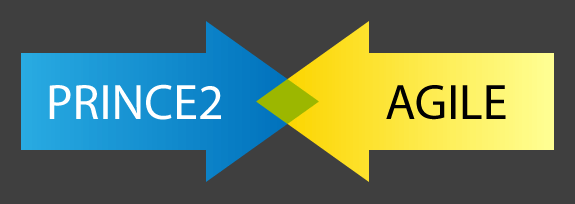It often said that the best things come out of the most unexpected solutions and unexpected is the word that comes up often after hearing about the PRINCE2 Agile method. For most of us, it is hard to believe that the two fundamentally different approaches have been merged into one successfully. And that this solution has already been applied in some teams. While it is yet to be determined how successful this new method will be in the long term, there is undoubtedly some good reasoning behind it. Let us go ahead and see what it is.
Up until this point, most of the PM community thought that the two methods – PRINCE2 and Agile, are fundamentally different. Some even went as far as fighting the other side over the superiority of their choice. However, the new approach led by Keith Richards, brings us to thinking about where the differences actually lie. We know PRINCE2 as a more traditional method, focused on control and governance, and we know Agile as a new age method, focused on flexibility and adaption to the environment. However, we often tend to get off the right track and bring up our misconceptions about the two based simply on our opinions.
The differences
It is often thought that PRINCE2 is solely for waterfall projects because of being heavy in command and not flexible. While the method is commonly used for waterfall and has some degree of authority and lack of flexibility, these statements are far off from absolutes. For Agile, on the other hand, the common misconceptions are quite the opposite – it is thought that there is no control, no documentation, and no planning whatsoever. However, it is not exactly correct and exaggerated to a large extent.
The actual difference between the two methods is found in the vision – PRINCE2 is built to focus on the big picture (the overall project), while Agile thrives in the small image (delivering an actual product). Looking at the two from this perspective allows us to see a point from which they can coexist under one roof, only in different domains. PRINCE2 used for the long term plans and management at the higher executive layer.
The cake
This brings us to what the methodology calls the layer cake – PRINCE2 is kept on top, Agile at the bottom, and the middle layer in between them is where the two mix. At first, you might think, this is great – we will use PRINCE2 for management and Agile for execution. However, you should not forget the middle layer – mixing them is what makes this method work. For each project, you will have to decide how much PRINCE2 and how much Agile you should use. Based on what makes the most sense for the team and the challenges at hand. So in trying to do the PRINCE2 Agile work, you will always have to balance the layer cake and to determine what will bring forth the best results.
The benefits
The advantages of such an approach, when used successfully, are undeniable. Besides the simple things such as loosening up PRINCE2 and structuring Agile, this will allow teams to scale up Agile in an entirely new way, bringing in governance that higher structure needs and Agile lacks. For more traditional organizations, on the other hand, this method will allow us to bring in Agile in a more corporate-friendly way. There will be no need to restructure the whole operation, but instead, the change will happen gradually in the smaller operational teams.
To achieve this merge successfully, they will need to be not only proper balancing between the two but also flexibility in terms of methodology guidelines. Agile teams will need to fit in the work packages of PRINCE2, keep in mind the big picture, and develop a more formal way of reporting to the higher management. In contrast, the administration in question will have to lighten up on planning, documentation, and become more change friendly to accommodate the Agile teams.
No doubt finding the right balance between PRINCE2 and Agile will have to be a constant effort. The thing PRINCE2 teams should keep in mind, though, is that some degree of Agile can be used in every single project. As longs as you asses the risks, understand overlaps, and play to the strengths, PRINCE2 Agile might be your long term solution after all.





